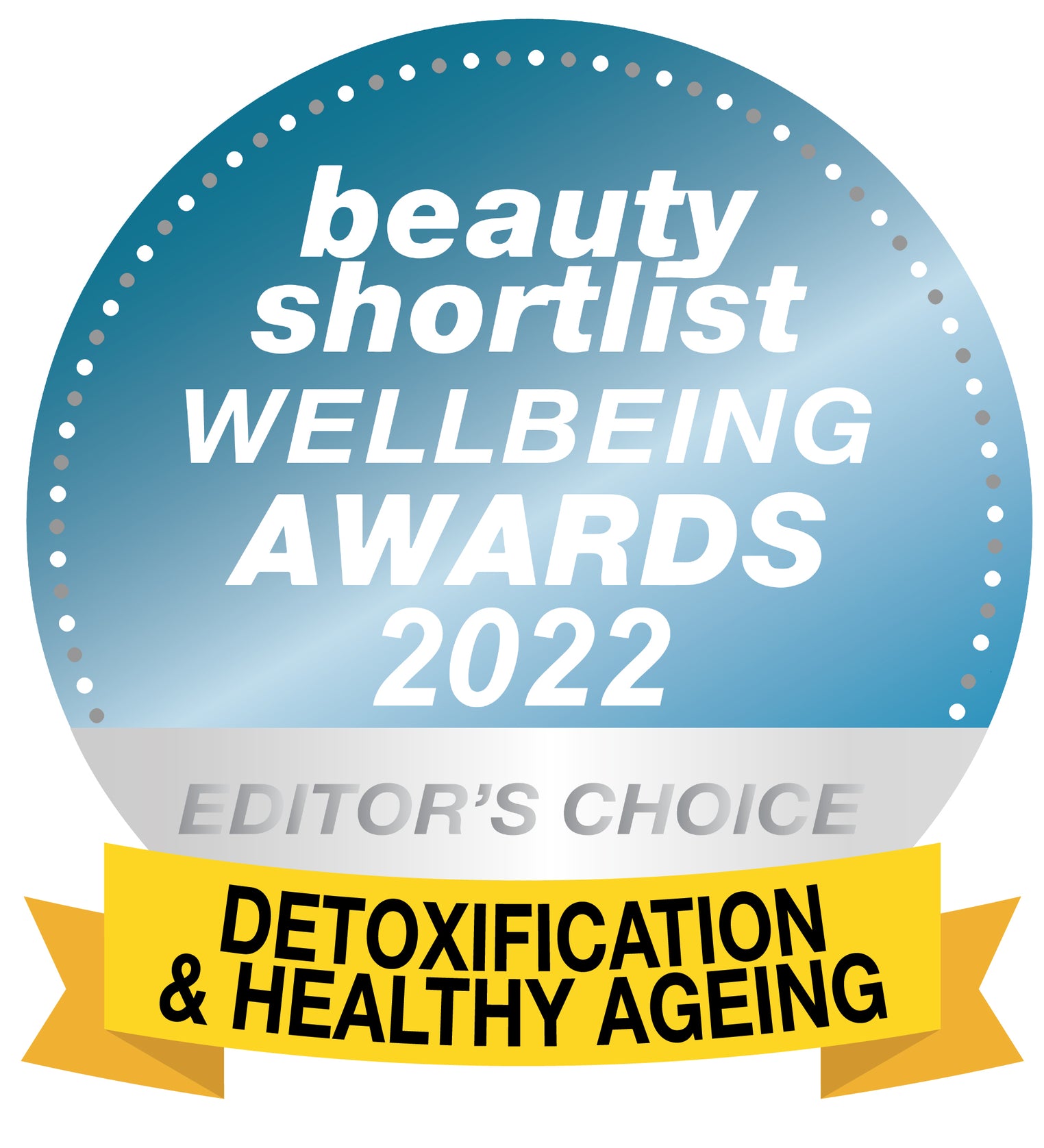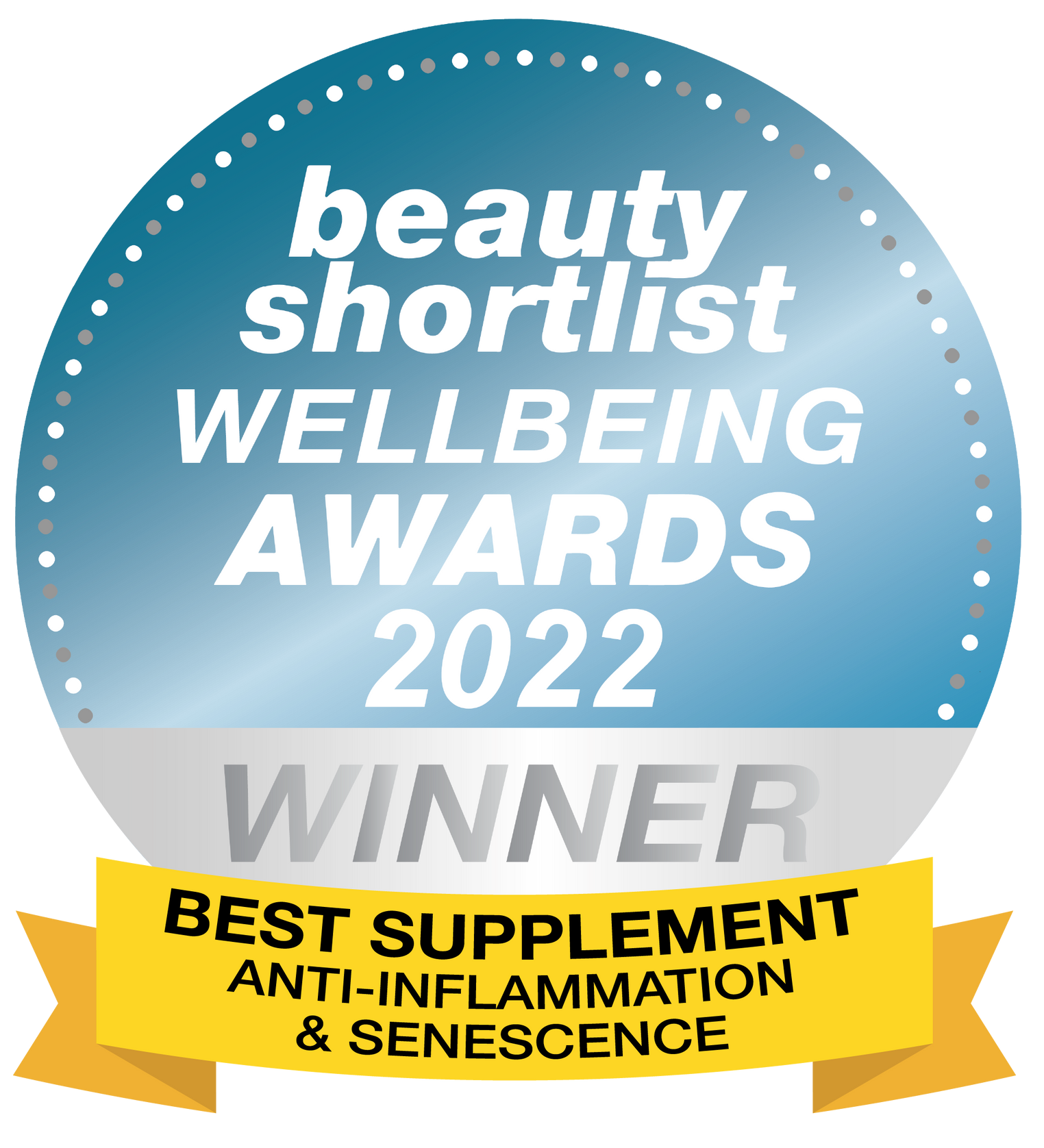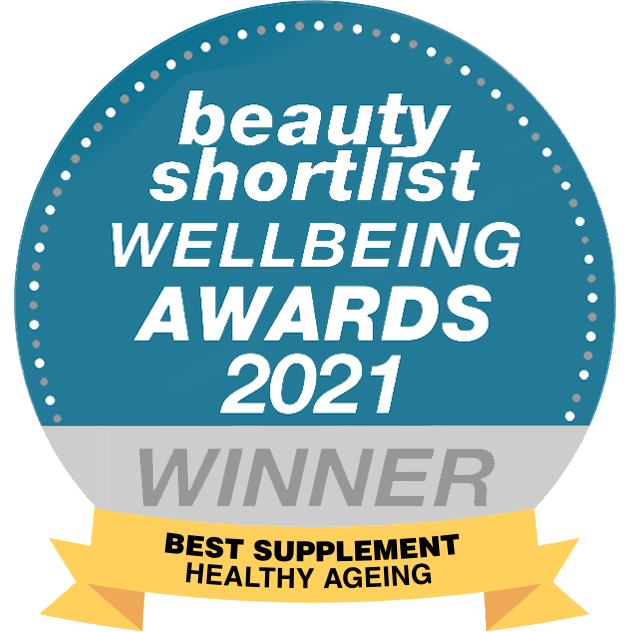There’s more to aging than meets the eye. As a matter of fact, what we see happen to ourselves externally is a sign that aging has occurred internally on a cellular level. In the second part of this series, we will explore the remaining 5 hallmarks of aging plus ways to minimize the damage.
If you missed the first part of this series, you might like to read What Are the Hallmarks of Aging? Part 1 - Primary Hallmarks

The 9 hallmarks of aging are intricately linked and how, exactly, they relate to each other is still largely unknown. In part 1, we explored the primary hallmarks of aging. These include:
-
Genomic instability- ongoing DNA damage causing an accumulation of dysfunctional cells or mutant cells.
-
Telomere attrition- the shortening of the protective caps at the end of our chromosomes called telomeres.
-
Epigenetic alteration - changes to the “instructions” to the genes on how to build a certain cell.
-
Loss of proteostasis - dysfunction in the protein production system.
These four factors are thought to be the primary cause of cellular damage. In response and, to mitigate the damage, the body responds with the next three hallmarks which are known as the Antagonistic Hallmarks of Aging. These are:
-
Mitochondrial dysfunction
-
Deregulated nutrient-sensing
-
Cellular senescence
According to the researchers who wrote the original 2013 paper on The Hallmarks of Aging, the last two hallmarks are known as the integrative hallmarks because “they are the end result of the previous hallmarks and are thought to be responsible for the functional decline associated with aging.” These last two hallmarks are:
-
Stem cell exhaustion
-
Altered intercellular communication
Let’s take a closer look.

Mitochondrial Dysfunction - aged mitochondria can’t function properly
“Mitochondria are membrane-bound cell organelles that generate most of the chemical energy needed to power the cell's biochemical reactions.”
— NIH - National Human Genome Research Institute
Mitochondria are the “batteries” or powerhouses of our cells. They produce energy in the form of ATP that provides fuel to every cell for every function in our bodies. During the formation of ATP, the cells create free radicals (reactive oxygen species). A small amount of ROS is good and is important for several cellular pathways that are important to health.
Generally, the more energy that an organ or muscle requires, the more mitochondria there are. These molecules are unique in that they have their own form of DNA which is separate from our own. However, this means that they also experience their own form of age-related decline.
Mitochondria also have other roles too. They contribute to the immune system and help inflammation, they help thermogenesis (keeps the body warm), they regulate calcium levels, and they also are important for cell survival and death.
Because mitochondria play a key role in many cellular processes, mitochondrial dysfunction and a build-up of ROS due to a poor antioxidant response, are associated with a number of age-related conditions such as diabetes, Alzheimer’s, and Parkinson’s.
There are a number of ways that mitochondria can become dysfunctional as they age. For example, the molecules that make up the cell membrane of the mitochondria could be altered and that will negatively affect energy production. Or the protein molecules that act as messengers could become faulty, also causing problems with energy production.
Mitochondrial DNA can also experience the shortening of telomeres and DNA damage. Although mitochondria do have repair systems in place to repair and remove damaged DNA, sometimes these systems fail, resulting in a large number of damaged mitochondria and oxidative stress which can affect tissues including skeletal muscle and nervous tissue.
On top of the damage to mitochondrial DNA, as we age, our respiratory systems become less effective which also leads to lower ATP levels as well which further affects cell functioning.
All-in-all, in the same way, that a faulty car battery affects almost every function in a car when mitochondrial become dysfunctional, they can affect the other hallmarks of aging.
How to support our mitochondria
Eat healthy foods rich in antioxidants and good fats
Once more, the food we eat and our lifestyle habits play an important role in supporting the health of our mitochondria. Eating a healthy diet rich in antioxidants and healthy fats will provide the body with everything it needs to support the mitochondria.
At the same time, reduce factors that can cause inflammation. Aim for pasture-raised or wild-caught proteins that will have less inflammatory agents such as routine antibiotics and heavy metals. Where possible, choose organic produce or wash commercial fresh produce extremely well to remove any pesticides
Reducing foods that cause inflammation is key and a way to prevent excessive oxidative stress in the mitochondria.
Practice calorie restriction or intermittent fasting
Calorie restriction is a well-known anti-aging hack. It boosts mitochondrial health by reducing free radical production. It also activates AMPK and sirtuins (longevity pathways) that support mitochondrial health and well being. We cover these two pathways in the next hallmark but they are two longevity processes that you definitely want to activate if you want to keep your mitochondria healthy!
If you’d like to find out more hacking age, you might enjoy reading Five Easy Anti-Aging Hacks to Increase Your Longevity
Exercise regularly - particularly weight resistance and HIIT
Mitochondria thrive when we exercise. As the saying goes, “You need to burn energy to get energy.” High-Intensity Interval Training (HIIT) not only forms new mitochondria, it also increases the size of the mitochondria.
Loss of muscle mass has been attributed to mitochondrial dysfunction. In a study, muscle loss was partially reversed in aged participants after six months of resistance training. Including regular resistance training to your exercise routine will help support your mitochondria.
Take a plunge on the cold side
Taking a swim in a cold lake or pool is good for your mitochondria. It activates AMPK and also increases the number of mitochondria in your cells. Regular cold water swimming or plunging has also been shown to activate brown fat (which keeps us warm) and reduces white fat (the bad fat).
Get into the sun
Regular sunshine not only boosts mood but it also boosts your mitochondria. Just be sure to practice safe sun habits, especially if you’re at risk of skin cancer.
Take natural supplements designed to support mitochondrial health
These two molecules are precursors to NAD, a critical molecule for cell functioning. Without NAD, the family of proteins that help mitochondrial health, sirtuins, cannot function properly. Adding NMN or NR to your daily health supplement regime is one of the best ways to support your cells.
This product has been specifically designed to activate sirtuins and also counteract inflammation. Sirtuins consist of 7 proteins and 3 of them work specifically in the mitochondria.
Krill oil is a powerful anti-inflammatory and will help reduce the oxidative stress and inflammation levels throughout your body. It’s 48 times more effective than traditional fish oil. It also contains choline which supports cell membranes, metabolism, cell signaling, and helps with DNA synthesis. All-in-all, Krill oil is a great option to support mitochondrial function.
L-Carnitine andAlpha Lipoic Acid
L-carnitine, an amino acid, helps transport fatty acids into the mitochondria to be used as energy. It is a critical molecule for normal mitochondrial function. Although research is still being done on this molecule, so far it shows the potential to support mitochondria. To find out more, read How to Use L-Carnitine to Boost Performance and Slow Aging.
Alpha Lipoic Acid is a powerful antioxidant and co-enzyme. It is also crucial for energy production and protects the cells from antioxidants. In a small study, it was shown that taking L-carnitine and ALA together helped slow mitochondrial dysfunction. More research needs to be done on this combination but so far the therapeutic potential is good.

Deregulated Nutrient-Sensing - cells become less sensitive to the levels of nutrients in the body
“The ability to sense and respond to fluctuations in environmental nutrient levels is a requisite for life.”
— Efeyen, Comb, and Sabatini
Nutrient sensing is the body’s ability to sense and adapt to intracellular and extracellular levels of nutrients such as sugars, amino acids, lipids, and nutrients such as vitamins.
When there is an abundance of food and nutrients, the body builds and stores because it perceives it as a time of plenty. When there is a lack of food, it triggers survival pathways (longevity pathways) that release fat stores so that the brain and body can continue to function. The body’s ability to sense these fluctuations is extremely important to our health because it helps regulate metabolism and influences aging.
The regulation of the intake of nutrients is dependent on several nutrient-sensing pathways that rely on the mitochondria to be functioning as they should. If the mitochondria are damaged through oxidative stress and lifestyle factors, the cell’s ability to sense nutrients will also be negatively affected. This can have a dramatic effect on aging and can contribute to a number of conditions associated with age.
There are four main pathways that sense nutrients, regulate metabolism, and affect aging. These pathways are intricately balanced and too much or too little can also cause problems.
IIS (Insulin and Insulin-like growth factor) pathways
Our bodies have multiple ways to maintain glucose levels. The ability to take in glucose, store it, use it, and break it down is tightly governed by a number of pathways. When damage occurs to the cell, it can negatively affect the body’s ability to sense and use glucose correctly. For example, when a cell can no longer detect insulin levels, blood sugar will rise to dangerous levels. Deregulated glucose-sensing underlies many conditions related to blood sugar like type 2 diabetes and metabolic syndrome. Lower levels of IIS have been correlated to a longer lifespan.
mTOR
The mechanistic target of rapamycin (mTOR) senses when there is an abundance of protein and nutrients. It is extremely important for cellular growth and repair. If you want to build muscle or heal, mTOR is your friend. Unfortunately, in this case, there can be too much of a good thing, and when the body’s ability to sense amino acids becomes dysfunctional or you are eating too much food for your daily needs, mTOR levels can rise. When the body’s ability to regulate this pathway is affected, it can also result in chronic conditions. High levels are associated with some types of cancers, autoimmune conditions, and depression.
If you’d like to find out more about mTOR, you might enjoy reading: What Is the MTOR Longevity Pathway?
AMPK
AMP-activated Kinase senses when nutrients are scarce and is activated through calorie restriction. It revs up the metabolism and kicks fat-burning into gear. It also helps autophagy which is the body’s natural way to remove and clear out damaged cells so that it can regenerate healthy cells. High levels of AMPK have been associated with longer life and health spans. Low levels are associated with chronic conditions such as metabolic syndrome, obesity, and inflammation.
In a nutshell, AMPK is one of the many longevity pathways that you want to activate. You can find out more in: What is AMPK? How Does It Influence Aging?
Sirtuins
Another longevity pathway that senses energy levels, sirtuins are a family of proteins that control metabolism, cellular health, and aging. In short, they regulate the pathways that control cell death, they turn anti-aging genes on and off, repair DNA, regulate epigenetics, and help our metabolism. They are dependent on NAD+ and can’t function without it. When energy levels are low due to calorie restriction, NAD+ levels are high which activates the sirtuins. Conversely, when there is an abundance of food, then NAD+ levels tend to be low, and, as a result, sirtuins can’t perform their role. Low levels of sirtuins are associated with aging and many other chronic conditions.
How to help the nutrient-sensing pathways
The above pathways are intricately balanced and scientists are still researching how they relate to each other. However, there are steps that we can take to support these pathways.
Calorie restriction
The longevity and health benefits of calorie restriction are well known. It’s one of the most reliable ways of preventing age-related disorders because it reduces IIS and mTOR, but activates AMPK and Sirtuins. The challenge is to reduce calories by 10-30% but ensure that you meet your daily nutrient requirements.
It can be very challenging to maintain a restricted-calorie diet in the long term. Therefore, a good option is to consider a calorie restriction mimetic.
Berberine - AMPK activator and calorie restriction mimetic
Berberine works through several mechanisms to regulate blood sugar and mimic calorie restriction. It also activates AMPK. It is so effective that it competes head-to-head with metformin. You can find out more about the comparison between the two in Berberine the Super Anti-Aging Antioxidant.
Our product RELEAF contains berberine, PQQ, and Silymarin. It is specifically designed to activate AMPK and support blood sugar levels.
Resveratrol - potential calorie restriction mimetic, activates Sirtuins and inhibits mTOR
Resveratrol is possibly one of the most well-known longevity polyphenols. It’s thought to mimic calorie restriction, it activates Sirtuins, and inhibits mTOR. Our product PRESERVAGE has been tailored to activate Sirtuins through Reveratrol, Curcumin, Quercetin, and BioPerine.

Cellular Senescence - aged cells that don’t die and release toxic signals that cause inflammation
“Cellular senescence is a state in which cells can no longer divide. This permanent state entails benefits and detriments for the organism in which the cells live.”
— biologydictionery.net
Healthy cells divide and multiply throughout their life cycle. However, there is a point (called the Hayflick Limit) when our cells stop dividing and growing. At this stage, they either die or they are “retired” and no longer perform the function that they are supposed to perform. This pause in the cell cycle is known as senescence.
Factors that cause senescence are varied but can be because of oxidative stress, telomere attrition, DNA damage, and other factors that may have caused cell damage.
Senescent cells were first thought to be a protective mechanism to prevent damaged cells from dividing to prevent tumors and cancer. But research is ongoing and scientists now think that they may have a role to play in certain cellular processes because they give off a cocktail of cellular signals.
In a normal healthy body, these “living dead” cells are usually cleared away by the immune system. However, this mechanism becomes faulty with age and senescent cells start to accumulate. But, in the process, the cocktail of proinflammatory signals also accumulates which causes all sorts of cellular damage and also seems to cause other cells to become senescent as well, further exacerbating the problems.
The accumulation of these cells is thought to be one of the main factors that cause the degeneration that comes with age. To find out more, you might enjoy reading Zombie Cells and Aging - How to Fight the Walking Dead Cells
How to get rid of senescent cells
Support your immune system
The first line of defense is supporting your immune system. The immune system is critical in clearing away these cells. Vitamin C is a powerful antioxidant that combats oxidative stress, strengthens the immune system, helps heal and repair wounds, and so much more. Taking vitamin C in liposomal form is one way to make sure that you absorb this crucial vitamin so that you can experience its health benefits. Find out more in Vitamin C Megadose Health Benefits - From Colds to Longevity.
Take senolytics
Senolytic compounds have been used to selectively destroy senescent cells. Although research is ongoing, there are a number of natural products that may help clear away senescent cells.
PRESERVAGE
Our product, Preservage, contains quercetin. This molecule is a plant flavonoid that’s found in berries, apples, green tea, red wine, and onions. Quercetin is a mild senolytic that works through the AMPK pathway to help clear away these cells. It also boosts sirtuins that control cellular death.
Fisetin
Fisetin is a polyphenol that’s found in strawberries, apples, grapes, persimmons, cucumbers, and onions. Fisetin has been shown to be effective at reducing senescent markers. You can take fisetin in supplement form and you can also increase the quantity of the above foods in your diet.

Stem Cell Exhaustion - reduced stem cell activity
“Stem cells are special human cells that are able to develop into many different cell types. This can range from muscle cells to brain cells. In some cases they can also fix damaged tissues. Researchers believe that stem cell-based therapies may one day be used to treat serious illnesses such as paralysis and Alzheimer's disease.”
— University of Rochester Medical Center - Health Encyclopedia
Stem cells are the source or progenitor of all body cells. They help cells regenerate. Amongst many other functions, they play a vital role in repairing tissue, immune function, and blood production. Unfortunately, as we age, they lose their ability to divide and their activity slowly decreases.
The major causes of the decline in function are DNA damage, overexpression of proteins that inhibit the cell cycle, and telomere attrition. Another cause is the presence of chronic low-grade inflammation caused by oxidative stress and ongoing secretions from senescent cells. This constant low-grade inflammation is known as “inflammaging” because it is associated with growing older.
While the stem cells can regenerate themselves, as we age the rate slows down and so does the quality. This is thought to be one of the causes of chronic diseases.
How to help your stem cells
Because stem cell exhaustion is a result of the previous factors that influence aging, following the preventative measures mentioned in this article and the first article will help protect your stem cells. Minimize your exposure to environmental toxins that can cause oxidative stress, eat a healthy diet, and exercise. To help your body process toxins, supplementing with glutathione is a good option.
Glutathione is known as the “master detoxifier” and it protects cells and DNA from damage helps optimize the immune system, helps the body remove heavy metals and toxins, and also protects the mitochondria. You can find out more in What is Glutathione and Why Is It Anti-Aging?
Youth & Earth has liposomal glutathione that has excellent bioavailability.

Altered Intercellular Communication - “broken telephone” between cells
“Intercellular Communication - the transfer of information from one cell to another. Cells signal each other by direct contact with each other or by the release of a substance from one cell that is taken up by another cell. Intercellular communication is important for cels to grow and work normally. Cells that lose that ability to respond to signals from other cells may become cancer cells.”
— NIH - National Cancer Institute
Our cells communicate with each other via signaling pathways such as endocrine, neuroendocrine, and neuronal systems. However, as we age, inflammation levels tend to increase thanks to the previous hallmarks of aging, causing an ongoing low-grade inflammatory reaction and this negatively affects their ability to send and receive signals correctly. It’s a bit like “broken telephone” where the cell might not respond or interpret the signal correctly.
The ongoing inflammation (known as inflammaging) eventually deregulates the cellular signals and causes a decline in the immune system. This is thought to be one of the main causes of the decline in function that we see with age.
The most commonly cited causes are a dysfunctional immune system, a build-up of pro-inflammatory tissue damage, pro-inflammatory cytokines secreted by senescent cells, and excessive activation of the NF-κB pathway.
The NF-kB pathway is the main pathway or process that governs inflammation. When kept in balance, it helps the body respond and heal when hurt or damaged. However, ongoing inflammation is destructive, and high NF-kB levels have been associated with many chronic conditions and “symptoms” of age such as loss of muscle, muscle weakness, and bone loss.
How to improve cellular communication
Altered cellular communication is an end result of the previous hallmarks. By addressing the factors that cause the hallmarks, you will be able to bring down inflammation in your body which will go a long way in helping your cells communicate. Once more, supplements can also help.
In particular, Krill Oil is a powerful anti-inflammatory that inhibits NF-kB.
Once more, NMN or NR is also recommended to help improve intercellular communication through activating sirtuins.

Conclusion
The theory of the Hallmarks of Aging is still a new kid on the block when it comes to theories related to aging. That being said, from what we do know, there are proactive steps that we can take to prevent each of the 9 hallmarks. It’s important to remember that these factors are inter-related and even the smallest of steps can have an influence on each hallmark.
It’s never too late to start making changes to your lifestyle and adding natural supplements to support your body as it ages. The human body is incredible and by giving it the correct building blocks, you can start to turn back the hands of time.
“You can't turn back the clock. But you can wind it up again.”
— Bonnie Pruden
The content of this article is for informational purposes only. It’s not intended to be a substitute for professional medical advice, diagnosis, or treatment. Always seek the advice of your physician or health provider before starting a new health regime or program. Do not ignore medical advice or delay seeking it because of something you’ve read on this site or any Youth & Earth product.


























